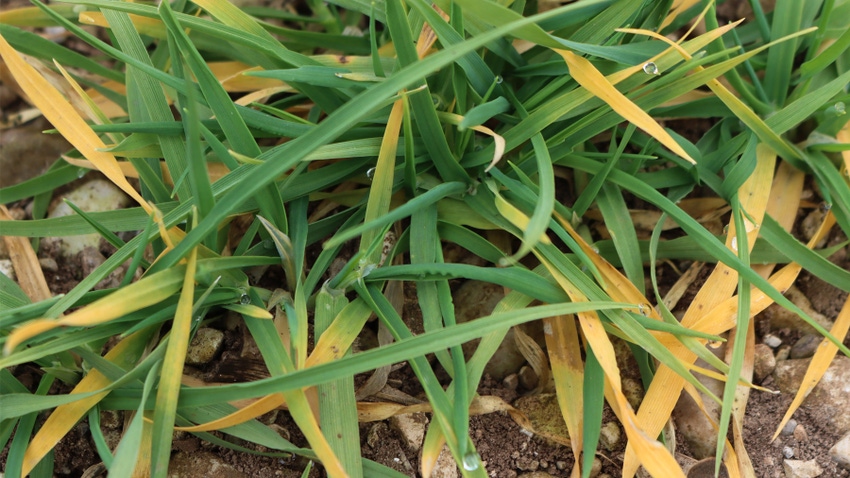May 4, 2023

by Pat Melgares
While low levels of nitrogen or sulfur in the soil often gets the blame for yellow wheat this time of year, a pair of Kansas State University plant pathologists say other factors may be contributing to yellowing in the 2023 crop.
“One thing that’s been interesting this year — and with the dry conditions we’ve had in Kansas — is that such factors as low [soil] pH levels begin to show up,” says Dorivar Ruiz Diaz, a soil fertility specialist with K-State Research and Extension.
“We’ve seen some situations related to aluminum toxicity, which happens when pH levels are low enough for aluminum to become soluble in the soil, and basically creating toxicity to the root system,” he says. “So, we end up with very short, affected roots. That, combined with the dry conditions, leads to symptoms that may be similar to nutrient deficiencies.”
Ruiz Diaz says the conditions also may be confused with phosphorus deficiency, and the crop will seem to be drought-affected. “This happens because the plant’s access to water and nutrients is affected by low pH levels [in the soil].”
Disease
Plant pathologist Kelsey Andersen Onofre said yellow wheat can also be a result of disease affecting the plant. Diseases found in Kansas wheat often include soilborne mosaic virus, spindle streak mosaic virus, barley yellow dwarf virus, leaf rust, stripe rust and wheat streak mosaic virus.
“Two of those — soilborne mosaic virus and spindle streak mosaic virus — are starting to fade now as temperatures are rising,” Anderson Onofre says. “Most of our varieties in the eastern part of the state are resistant [to those viruses], but there are a few that are not. So that can be something we see early in the spring and can affect yield.”
As temperatures warm, however, barley yellow dwarf wheat streak mosaic virus and the rusts become more of a concern, she says.
“Wheat streak mosaic virus is no stranger to our producers out West, but we have been getting a number of samples this year from the central corridor of the state,” Andersen Onofre says. “I’m imagining there are probably fields that have wheat streak mosaic virus now — but also have extremely bad drought symptoms, too. It may be hard to distinguish them from the road, but that is something that producers should keep an eye out for.”
Next steps
With harvest about two months away, there’s very little that producers can do with wheat that is affected by low soil pH or hit by disease. Ruiz Diaz said producers may be able to take corrective action for mobile nutrients like nitrogen or sulfur; but for the long term, they should still plan to test the soil so that they can prevent problems with a future year’s crop.
“From a nutrient management standpoint, one thing that I emphasize is in-season monitoring of nutrient levels,” he says, noting K-State’s soil testing lab in Manhattan, Kan., is a good resource for testing. “A tissue test combined with a soil test is a good way to find out the limiting factors. We may be able to do something about it in-season — but in most cases, the information is going to be relevant for the next season.”
Andersen Onofre says virus testing through the K-State plant disease diagnostic lab can also help producers with a crop insurance adjustment.
“For future years,” she adds, “it’s good to think now about variety selection. If you had some fields where you’ve had history [of disease] … it’s important to be mindful of variety resistance for those viruses.”
K-State publishes an annual Wheat Variety Guide to help producers with variety selections. Information on soil tests and more regarding wheat production in Kansas is available at local Extension offices.
Melgares is a writer for K-State Research and Extension News Service.
Source: Kansas State Research and Extension News Service
You May Also Like




